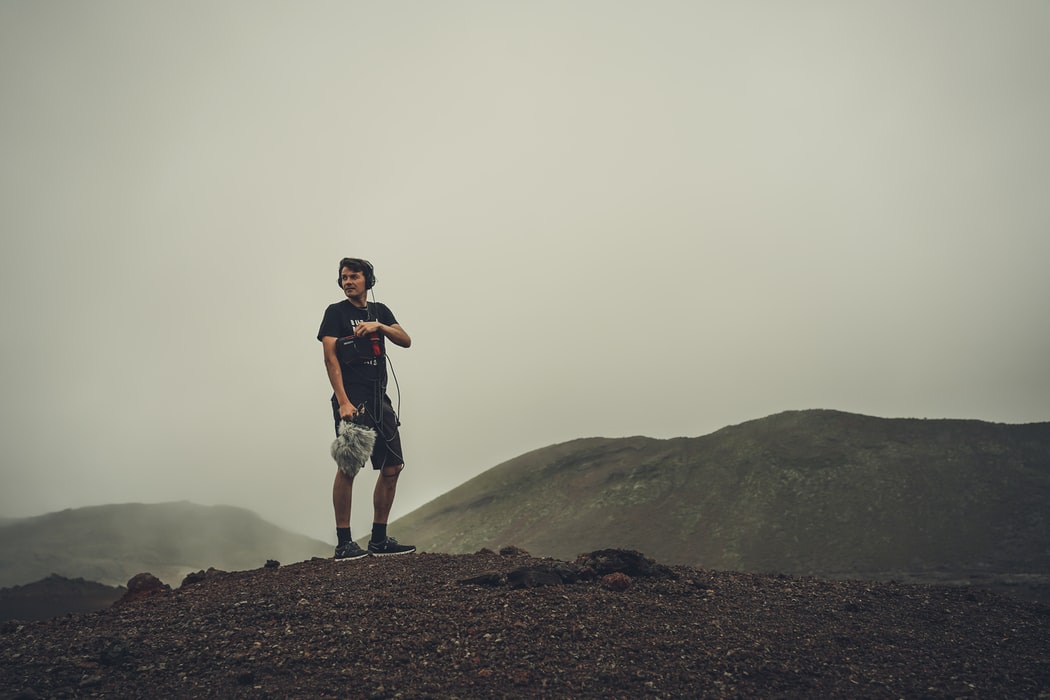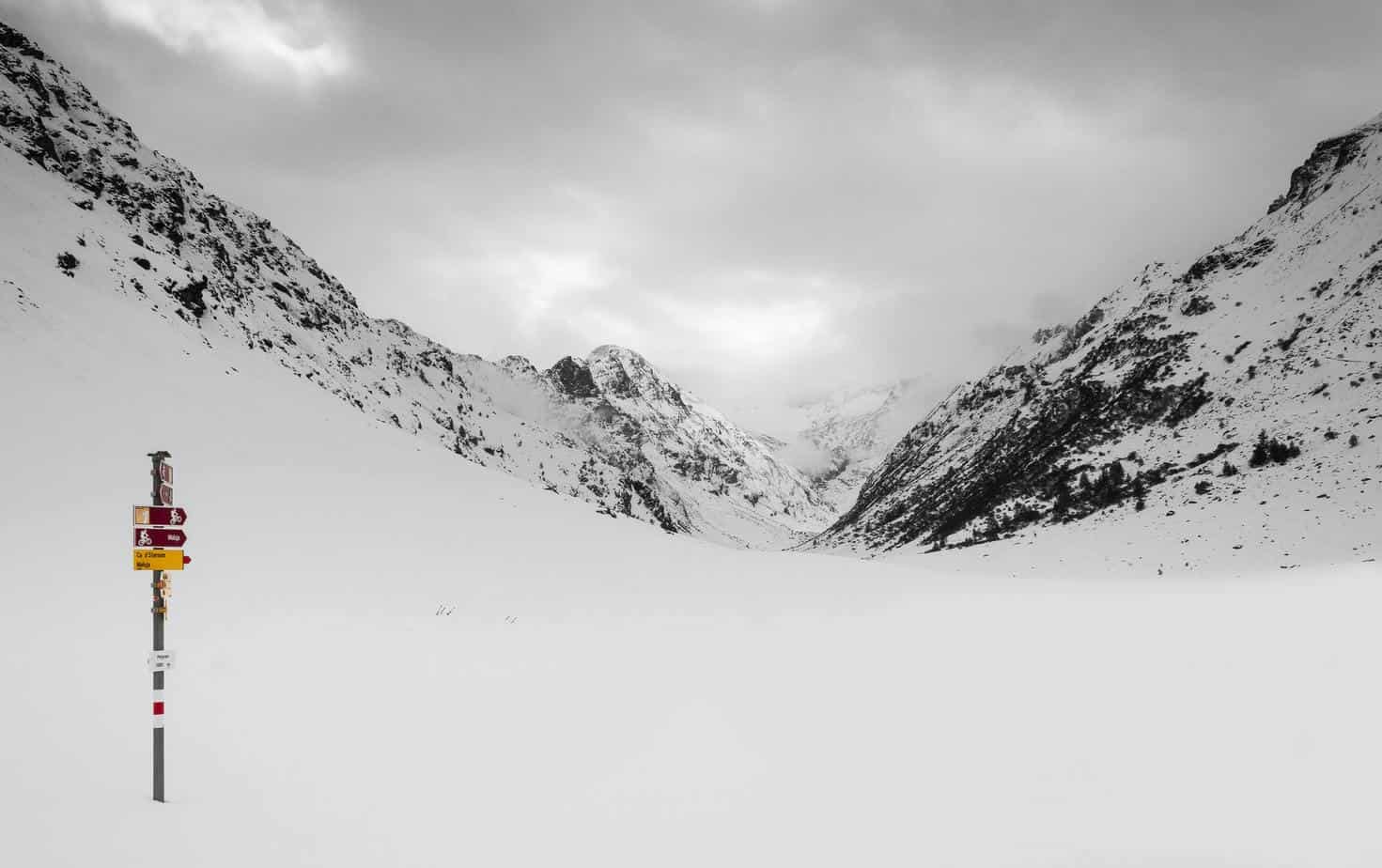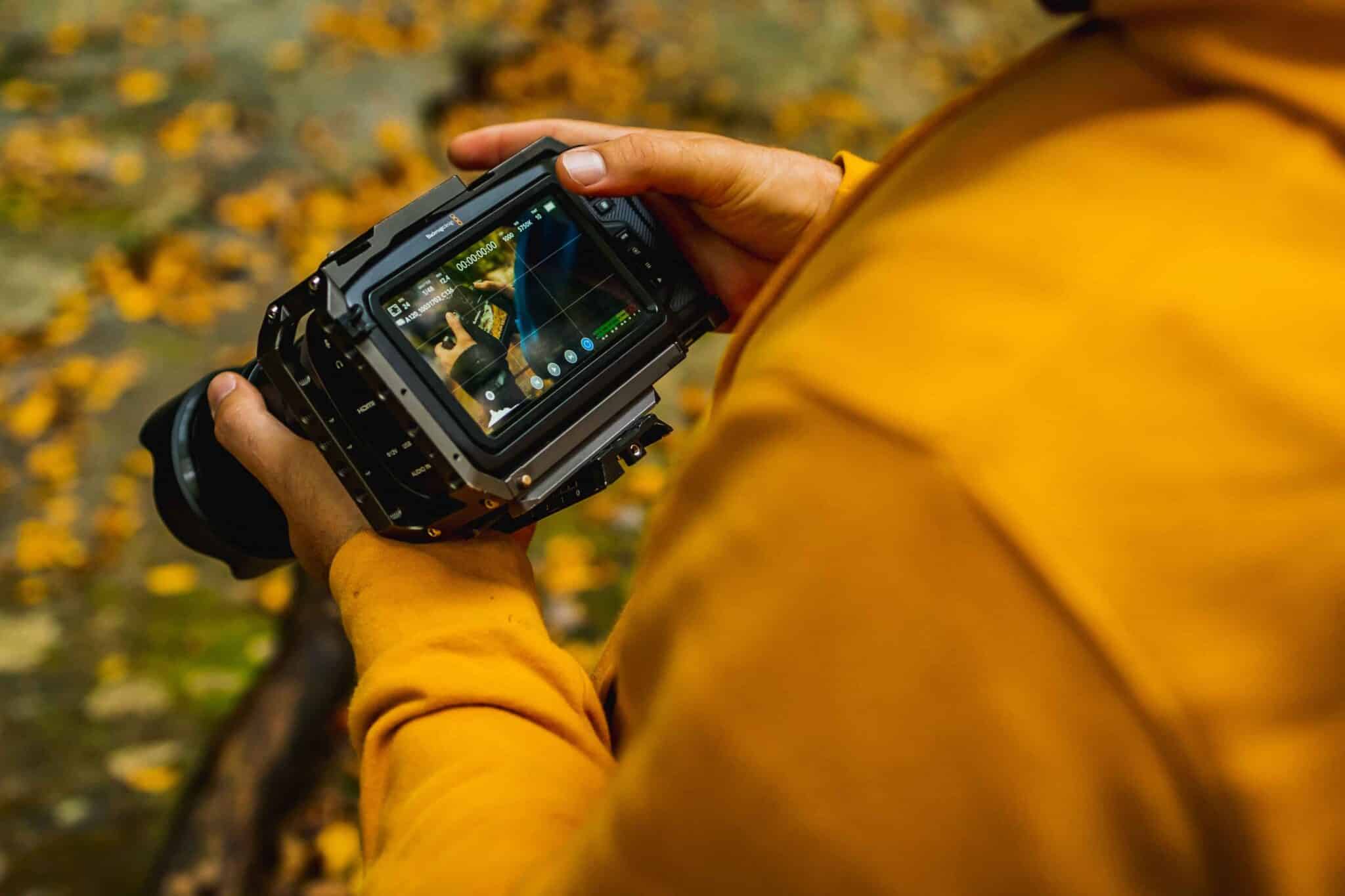We love seeing so many folks enjoying outdoor recreation, but we don’t like outdoor wreckreation. With the increased visitation to the outdoors, we’re seeing too many of our beautiful spots damaged here, here, and here.
Whether it’s leaving trash on the trail or your poop, we think it’s as good a time as ever to (re)introduce the Leave No Trace Seven Principles for those of you who don’t know them, forgot them, or are just now finding out that there’s something called the “Leave No Trace Principles.” If you want more detail, you can read about them here.

What Does Leave No Trace Mean?
“Leave No Trace” is exactly how it sounds. Wherever you explore, make it so that the next person who visits would never know you were there at one point.
The Leave No Trace Seven Principles are a framework for minimizing our impact and protecting the outdoors. It isn’t a set of rules, but more of a state of mind and lifestyle that anyone who loves the outdoors would find enlightening.
By practicing these principles in our everyday lives, we protect the places we love to explore.
The Seven Principles apply to all activities outside and cover everything from the backcountry to your backyard.
Here are some helpful tips to incorporate them into your adventures.

Principle 1: Plan Ahead and Prepare
Are you planning ahead and preparing for adventures?
Planning and preparing for an adventure not only keeps you safe but protects nature. Plus, you’ll have more fun when you know what to expect and you’re not calling Search and Rescue (who are already spread thin as it is).
Before you head out on an adventure, ask yourself the following questions to be best prepared:
1. What are your expectations for your adventure?
2. What are the knowledge and skills of your group members that are applicable for this adventure?
3. How much do you know about the area you’re exploring? Is it prone to flash floods, avalanches, or droughts?
4. Do you have the proper equipment and gear for this adventure? The Ten Essentials and what else?
5. What will the weather be like during your trip? Prepare for the worst.
6. Are there any regulations, rules, or private land boundaries you need to be aware of? Ex: Fire restrictions, required permits, wild animals, etc.
7. How much food, water, and supplies will you need? Only bring what you need but make sure it’s enough.
8. Who have you told about your adventure, when you’re leaving, who you’re going with, when you plan to return, and what they should do if you don’t come back by the time you mention?
Daydreaming of your next adventure? Check out our blog, Planning For Your Next Adventure To Keep The Stoke Alive.

Principle 2: Travel & Camp on Durable Surfaces
Your adventure may cause harm to the environment if you’re not following Principle 2 of Leave No Trace: Travel and Camp on Durable Surfaces.
This principle focuses on exploring the outdoors without damaging land or waterways. When people trample vegetation, it damages the organisms, sometimes beyond recovery. And then we end up with soil erosion, unnatural trails, and barren landscapes.
Here are 4 trekking tips on your next adventure:
1. If a trail or campsite exists, stick to it. If there isn’t a trail or campsite, try not to create one.
2. Consider where you’re exploring and the surface durability. Different surfaces respond differently to travel. Rocks, sand, and gravel can handle a heavy load of trampling. Meanwhile, cryptobiotic soil is extremely vulnerable to foot traffic.
3. Choose a campsite in a heavy-use area or one with already depleted vegetation (and at least 200 feet away from water). This way, you’re doing minimal damage to the surrounding area when setting up your campsite.
4. Only camp in remote areas (aka – dispersed camping) if you’re highly skilled in bushcraft, wilderness survival, and of course, The Leave No Trace Principles.
To learn more about dispersed camping, here’s our introduction to it.
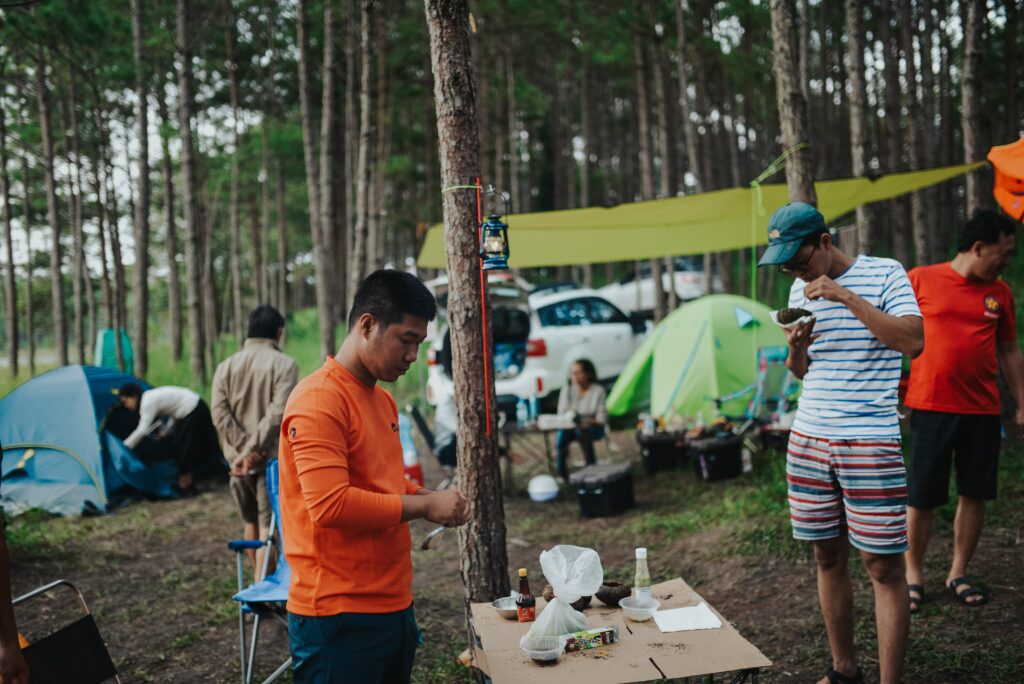
Leave No Trace Principle 3: Dispose of Waste Properly
Like they say, “Don’t 💩 where you eat.”
Everybody poops, but not everyone does so responsibly in the outdoors. Like these people, who left their human waste next to the lake.
Here’s a minimal checklist for leaving nature better than you found it:
- Check for toilet facilities and trash receptacles.
- If there are none, deposit solid human waste in 6-8 inch-deep catholes, at least 200 feet from water, camp, and trails.
- Pack out your toilet paper, all feminine products, and poop (if there are rules where you’re exploring).
- Cover and disguise the cathole when finished.
- Inspect your campsite for any trash or leftover foods and pack it ALL out.
- If you find trash that isn’t yours, pack it out with you too.
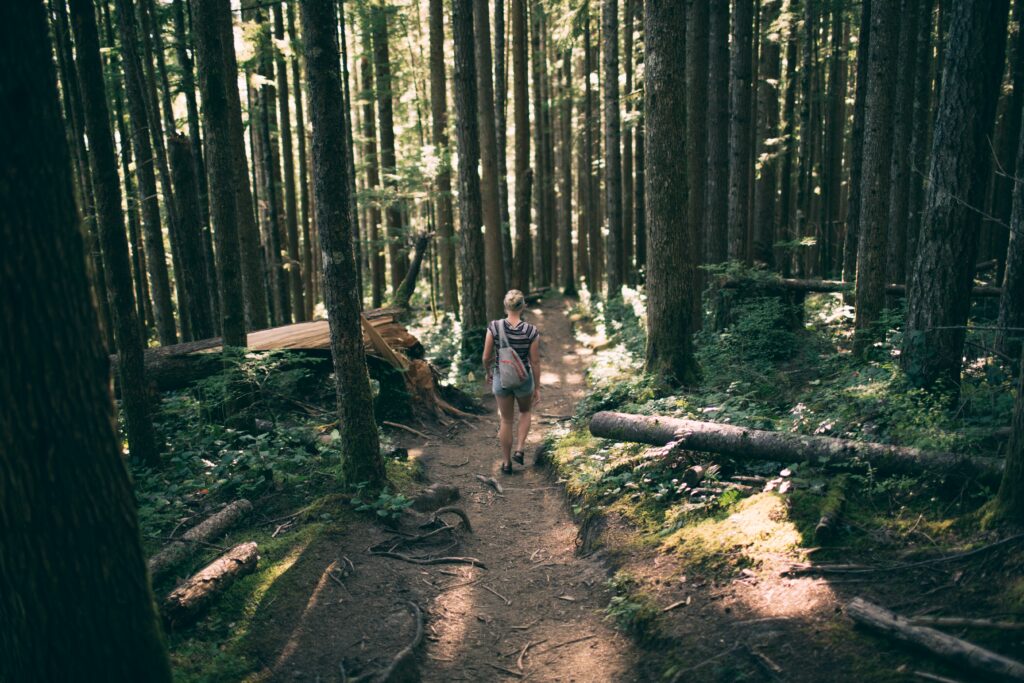
Principle 4: Leave What You Find
Also known as, “You can look, but don’t touch.” Here are just a few of the do’s and don’ts in the wild:
DO: Take pictures of landscapes, wildflowers, and cool things.
DON’T: Bring any of it with you.
DO: Enjoy rocks and shells as they are.
DON’T: Collect or move them.
DO: Find a tree to relax under.
DON’T: Carve your initials into them, hack at them with an ax or nail, or hang anything from them.
The take-home message is to leave rocks, plants, and other objects the way you found them. Give the gift of discovery to future adventurers.
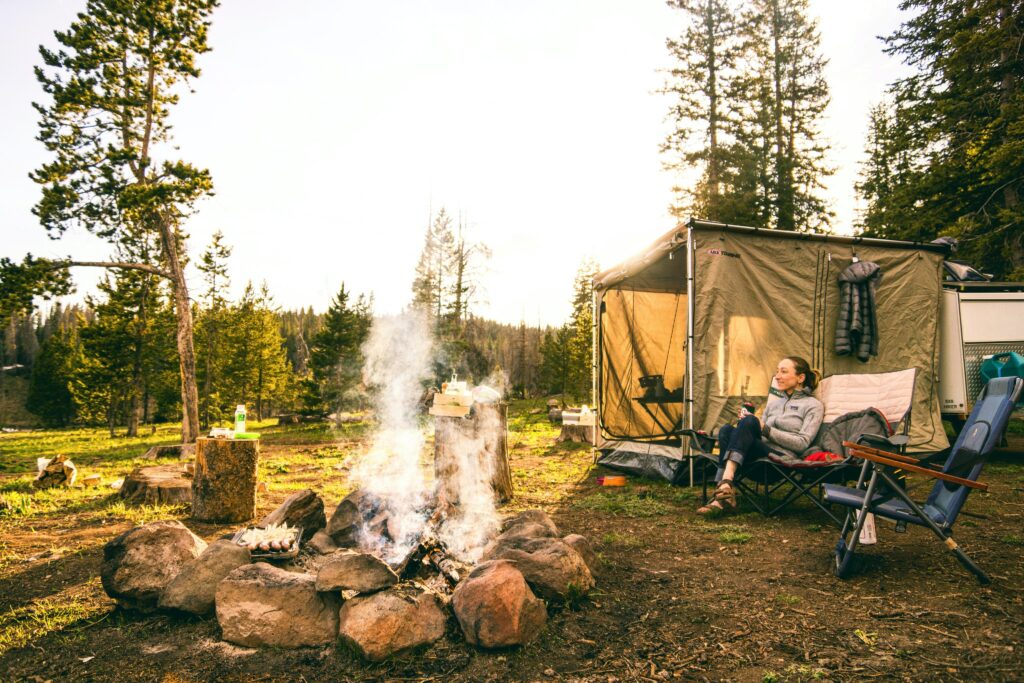
Principle 5: Minimize Campfire Impacts
What goes well with s’mores and ghost stories?
Existing fire rings
We love a good campfire, but they can also be one of the most destructive camping traditions.
If there’s an established fire ring at your campsite and there isn’t a fire ban in effect, then gather dead wood from the ground, and enjoy a small (and supervised) fire. When you’re done, make sure you put out the fire completely.
Or, consider a camp stove. They’re fast, flexible, and eliminate the need of a campfire.

Principle 6: Respect Wildlife
Whose home are you visiting when you’re in the outdoors?
Wildlife.
Just like we’d respect someone’s home we’re visiting, we need to do the same for animals.
Remember Principle 1 (Plan Ahead and Prepare)?
Know what wild animals to expect where you’re exploring and how to stay safe in their territory.
And then leave them alone. Admire them from a distance.
It’s as simple as that.
Don’t feed, chase, approach, or disturb animals you see outside. You, the animal, or both of you could get hurt.
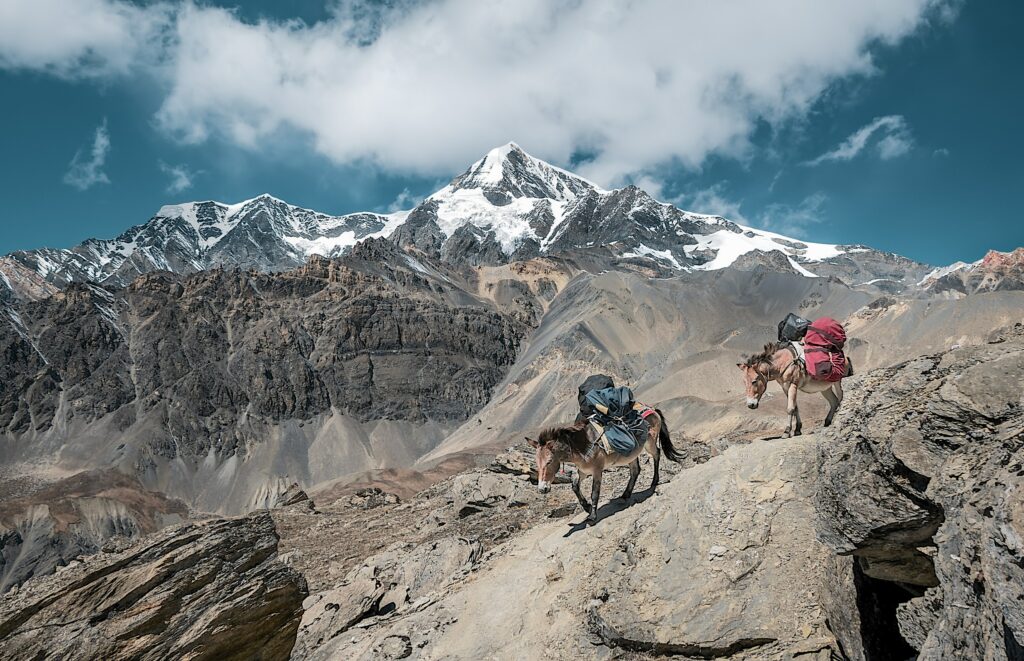
Principle 7: Be Considerate of Other Visitors
How to be a good steward of the outdoors and lead by example:
1. Keep your noise to a minimum. Everyone loves music, but not everyone loves your music.
2. If you’re heading downhill, pull aside for hikers traveling uphill.
3. Hikers yield to equestrians. Bicyclists yield to both hikers and equestrians.
4. Keep pets under control at all times. If you can’t keep them under control, leave Lassie at home. Finally, pick up their poop and pack it out with you.
5. Treat others the way you’d like to be treated.
Everyone is entitled to (respectfully) enjoy the outdoors.
Want to be a good outdoor steward? Read about Minimizing Our Environmental Impact On Adventures on our blog.
© 1999 by the Leave No Trace Center for Outdoor Ethics: www.LNT.org.


